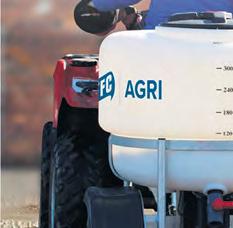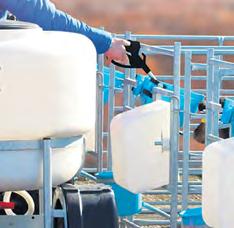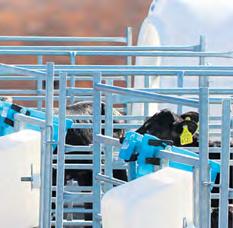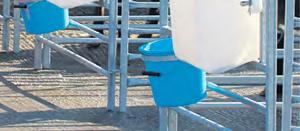
6 minute read
Change of AWA animal registration idents
YEAR CODE INSTEAD OF YEAR LETTER FOR 2022 REGISTRATIONS
The AWA has used a year letter system for registration of animals, to denote the year of birth of all animals in the AWA Herdbook. There are only 24 letters in the alphabet, but time is infinite. So, what happens when we run out of letters?
Using the English alphabet as the base of the 24 year letters, we do not use the letter “O” or the letter “I” due to the potential for confusion as numerical integers within an Animal ID. This leaves us with only 22 year letters that have been used to create an animal’s unique identification. As communicated at the 2021 WagyuEdge Conference and throughout 2021, each animal registered in the AWA Herdbook is required to have a unique registration identifier. This is the “Animal ID”.
With the First Wagyu genetics arriving in Australia more than 30 years ago, we are in the predicament of the risk of Animal ID duplications becoming increasing greater as larger numbers of animals are being born in herds that have been registering animals for 22 years or longer. The AWA Bylaws define how the AWA constructs Animal ID’s for the registration of animals as follows
IDENTIFICATION in relation to an animal means the unique series of the following information on that animal; its Herd Code, Grade Code, Year Letter and Calf-Drop Number.
HERD CODE is a unique identification approved by AWA for each herd for the purposes of registration. It comprises a three character code. The code may be made up of three letters, or three numbers or a combination of letters and numbers. The herd code is part of the identification with which an animal must be identified
GRADE CODE means the number or letter denoting the grade of an animal or the section of the register in which the animal is registered.
YEAR LETTER means the letter designated by the Association to denote the year of birth of a registered animal.
CALF-DROP NUMBER means the unique identification, consisting of a maximum of 5 alphabetic letters and/or numbers, allotted by the herd owner to each calf born in his herd for that year. (This excludes the Herd Code, the Grade Code and Year letter)
Using the above components to build an animal’s Identification, ensures that every animal registered with the AWA has a unique Animal ID which is critical for the registration, DNA testing and BREEDPLAN systems to operate accurately. We now have several herds that have been registering calves for more than 22 years. There is a risk that IDs of calves from the most recent birth year could be duplicating IDs of animals born 22 years prior. In 2020 the first animal ID duplication occurred in one of foundation Wagyu herds, the well know JKC herd – Island Wagyu. A polled 52Y sired 2019 born calf was requested for registration with the same animal ID as a 1995 born calf. So what happened? The duplication of Animal ID was detected, but the duplication enabled testing of the impacts of Animal ID duplication through the AWA systems as follows:
a) When the DNA test request was submitted for
JKCPQ0004 (2019 born) our registration system recognized the Animal ID as an animal which is already registered and assigned the test request to the 1995 born animal;
b) The DNA lab recorded the Animal ID in their system which could cause the incorrect sample to be tested if DNA testing was requested for animal JKCPQ0004;
c) Within the AWA Parent Verification process, the parentage verification system identified that
JKCPQ0004 was already registered and didn’t rerun the parent verification;
d) When the 2019 born JKCPQ0004 DNA result was loaded into AWA genetic analysis system it was linked to the 1995 born animal; and
e) The next BREEDPLAN analysis rejected the DNA result as the registered parentage of the 1995 born animal was different to the genomic parentage of the 2019 born animal submitted. In the case of JKCPQ0004, the prior registered animal registration was able to be changed so that JKCPQ0004 could be registered. However, the proportion of recently born animals exposed to the risk of having a duplicated ID will escalate as the number of calves registered 22 years ago is increasing every year.
To manage this risk, the AWA Board approved the use of a Year Code instead of a Year Letter, along with changes to the AWA Bylaws that note the use of a “Year Code” instead of a “Year Letter” as follows:
YEAR CODE means the combination of two-digit number and letter designated by AWA to denote the year of birth of a registered animal.
YEAR CODE YEAR CODE
2005 A 2023 23U
2006 B 2024 24V
2007 C 2025 25W
2008 D 2026 26X
2009 E 2027 27Y
2010 F 2028 28Z
2011 G 2029 29A
2012 H 2030 30B
2013 J 2031 31C
2014 K 2032 32D
2015 L 2033 33E
2016 M 2034 34F
2017 N 2035 35G
2018 P 2036 36H
2019 Q 2037 37J 2020 R 2038 38K
2021 S 2039 39L
2022 22T 2040 40M
<<< from page 35
Within the table on page 35 for 2022, the corresponding Year Code is 22T. The annotation of Year Code being the combination of the last two-digits of the Calendar Year, along with the traditional year letter. Each subsequent year then reflects the same two-digit and year letter code.
WHAT DOES THIS MEAN FOR WAGYU REGISTRATIONS OF CALVES BORN IN 2022?
From the 01 January 2022, all registrations of new calves born in 2022 will reflect the following registration identifier (Animal ID) structure example:
ABC F 22T 0001
HERD CODE GRADE CODE YEAR CODE DROP NUMBER
This animals ID would be ABCF22T0001 WHAT DOES THIS MEAN FOR PAST WAGYU REGISTRATIONS?
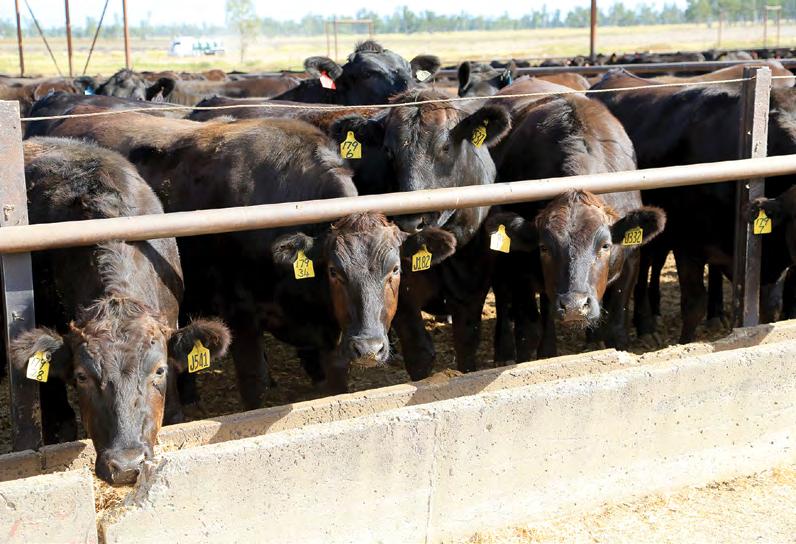
NOTHING. Past Wagyu registrations will not change. They are all unique and can be searched using the Animal ID that already exists for that animal. Existing Animal ID’s will not change.
DO I NEED TO CHANGE ANYTHING IN MY REGISTRATION FORMS FOR 2022?
NO, the AWA system for animal registration will automatically apply the year number (22) to the Year Letter (T) for 2022 born calves to create the Year Code (22T). As a member, you can continue to fill out the AWA Registration form as per normal. AWA will apply the Year Number to create the Animal ID for you. In the case of animals which were born before 2022, the registration system will automatically determine that the birth date is before 2022 and will only apply the Year Letter even though the animals are registered in 2022
HOW DO I SEARCH ANIMALS ON THE AWA WEBSITE OR IN BREEDPLAN?
When you are searching for 2022 born calves, you will need to remember to use the year code (22T) in the animal ID search.
HOW DO I BRAND OR TAG MY CALVES?
You can still use your normal on farm branding or tagging system. For example, you can brand or tag with T0001 as your management tag number, using the same system you have always used. When the animal is registered with the AWA, the Year Code will be added, i.e. ABCF22T0001



